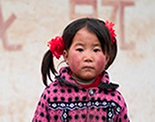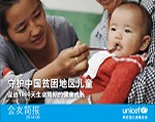
Source: Ministry of Health, National Immunization Survey Report, 2004
Figure 4.3
In 2002, the Government and the Global Alliance for Vaccines and Immunization (GAVI) introduced the hepatitis B vaccine to the country's National Immunization Schedule. Like many other countries in East Asia, China has a high prevalence of hepatitis B. Medical treatment of hepatitis B and related chronic complications, such as cirrhosis and liver carcinoma, puts a great economic burden on communities.
The 2004 national survey is the most recent source of non-administrative reporting on EPI coverage. More recently, a national serology survey conducted by the Chinese Centre for Disease Control and Prevention in 2006 found a major reduction in hepatitis B infections among children. Between 1992 and 2006, the prevalence of the hepatitis B surface antigen among children aged 0–4 decreased from 9 per cent to 1 per cent, an enormous achievement. With the increase in rates of hospital delivery, birth-dose vaccination against hepatitis B has increased dramatically, almost eliminating the risk of perinatal infection. However, hepatitis B vaccination coverage is still low in China's western provinces, and the disease burden (hepatitis B infection rate) remains high in certain western provinces and among ethnic minority groups.
上一篇:Figure 4.2 Full vaccination coverage among one-year olds, 2004
下一篇:Figure 4.4 Measles incidence and supplementary immunization activities, 2003–2011





























